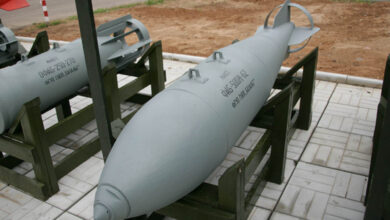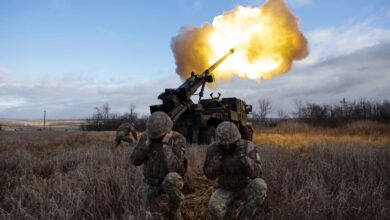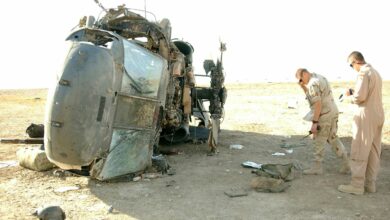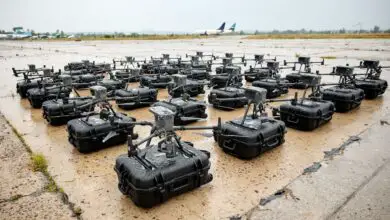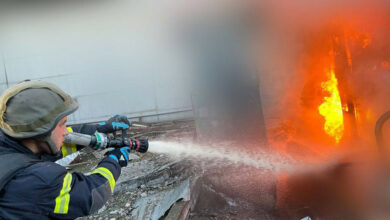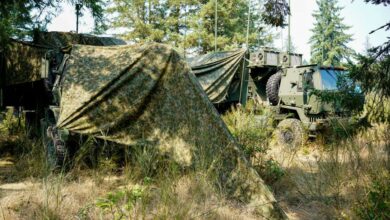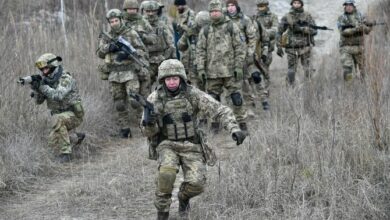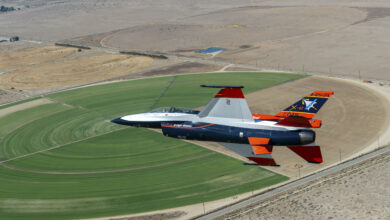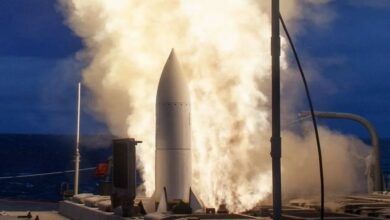
The continuing deterrent power of nuclear weapons in world politics was starkly highlighted at NATO’s Vilnius summit by the alliance’s refusal to grant NATO membership to Ukraine while it is at war with Russia.
Implicitly referring to nuclear weapons, President Joe Biden carefully signaled the US position before the summit when he said that bringing Ukraine into NATO’s ranks now would mean that “we are at war with Russia.”
Biden’s position on avoiding direct military confrontation with Russia is largely consistent with the nuclear weapons policy of all US presidents since the late 1940s, when the Soviet Union first acquired atomic arms and subsequently the means to retaliate.
Since then, mutual deterrence became an inescapable fact of life in superpower relations which largely prevails to this day.

Rules of Crisis Management
This is not to say that nuclear arms prevented Moscow or Washington from stumbling into dangerous crises during the Cold War years. Their sheer destructiveness, however, prevented US-Soviet confrontations over Berlin, Cuba, and the Middle East from escalating into World War III — a succession of crises that in any other era would undoubtedly have culminated in great power war.
The absence of war between Moscow and Washington, importantly, was also brought about by the evolution of tacit and sometimes explicit “rules” of crisis management and prevention in superpower relations. These included, especially in Europe, the establishment of respective US and Soviet-led alliances and spheres of influence, which clearly demarcated both alliances’ core strategic and geopolitical interests.
Techniques for crisis management, in addition, were quickly learned and operationalized in both Moscow and Washington in the aftermath of the 1962 Cuban missile crisis. These included the careful deployment of military forces for signaling and bargaining purposes, control of escalation alerts, the setting up of a hotline to maintain top-level communications between the Kremlin and White House, and, above all, the limiting of objectives and demands upon the adversary to enable crisis resolution.
The combination of such diplomatic practices, including arms control negotiations, the control of military risks, and a shared learning of nuclear dangers, contributed over time to stabilizing the US-Soviet Cold War rivalry.
But in the final analysis, it was the very existence of nuclear weapons – or what President John F. Kennedy’s national security adviser McGeorge Bundy called “existential deterrence” – that had a decisive bearing on preventing armed US-Soviet conflict when the strategic chips were down over Berlin in 1961, Cuba in 1962, and the Yom Kippur war in 1973.

Encroachment
Despite President Biden’s recognition of the dangers of nuclear war over Ukraine, the Cold War strategies that helped prevent armed violence between Moscow and Washington in the past appear to have largely fallen by the wayside in the current White House and in allied capitals across Europe.
The most crucial of these crisis prevention measures – and the one that largely underpinned Cold War peace in Europe – is not to encroach directly upon a nuclear-armed adversary’s borders or geopolitical space and thereby overthrow the balance of power. Yet this is precisely what NATO’s successive waves of expansion over a 30-year period have done vis-à-vis Russia.
And therein lies the danger of the Ukraine war escalating into either deliberate or inadvertent nuclear use by Russia or the West.
President Vladimir Putin has at various times since his invasion of Ukraine threatened the deliberate use of nuclear weapons in defense of Russia’s vital national interests. And there is little reason to doubt his warnings, especially if Russian armed forces are either on the verge of defeat or if large areas of Russian territory are invaded or captured by Ukrainian armed forces.
Unwanted Escalation
Unwanted escalation, however, is the more likely path to nuclear use in the current war.
Consider: an armed Russian bomber patrol over the Baltics is accidentally shot down by a rookie German fighter pilot with the loss of Russian aircrew.
Or – as actually happened in November 2022 – a Ukrainian missile accidentally lands in Poland, but initial news reports skew it as a pre-emptive Russian strike on NATO.
Such accidental events, especially if loss of lives is involved, could rapidly and inadvertently lead to hair-trigger alerts across Eastern Europe between NATO and Russian forces deployed, primed, and operating in close proximity to each other in a hot war zone.
The mutual deterrent power of nuclear weapons has thus far prevented the Ukraine war from escalating into a NATO-Russia fight. However, Western policymakers and their Russian counterparts will quickly need to re-discover the benefits of diplomacy, strategic restraint, and crisis management practices that prevented an all-out war during the Cold War years.
The alternative is nuclear escalation in Ukraine by sheer mischance.
 Pravin R. Jethwa (@NixonKissinger) is a writer on defense and international security in London, England.
Pravin R. Jethwa (@NixonKissinger) is a writer on defense and international security in London, England.
The views and opinions expressed here are those of the author and do not necessarily reflect the editorial position of The Defense Post.
The Defense Post aims to publish a wide range of high-quality opinion and analysis from a diverse array of people – do you want to send us yours? Click here to submit an op-ed.

